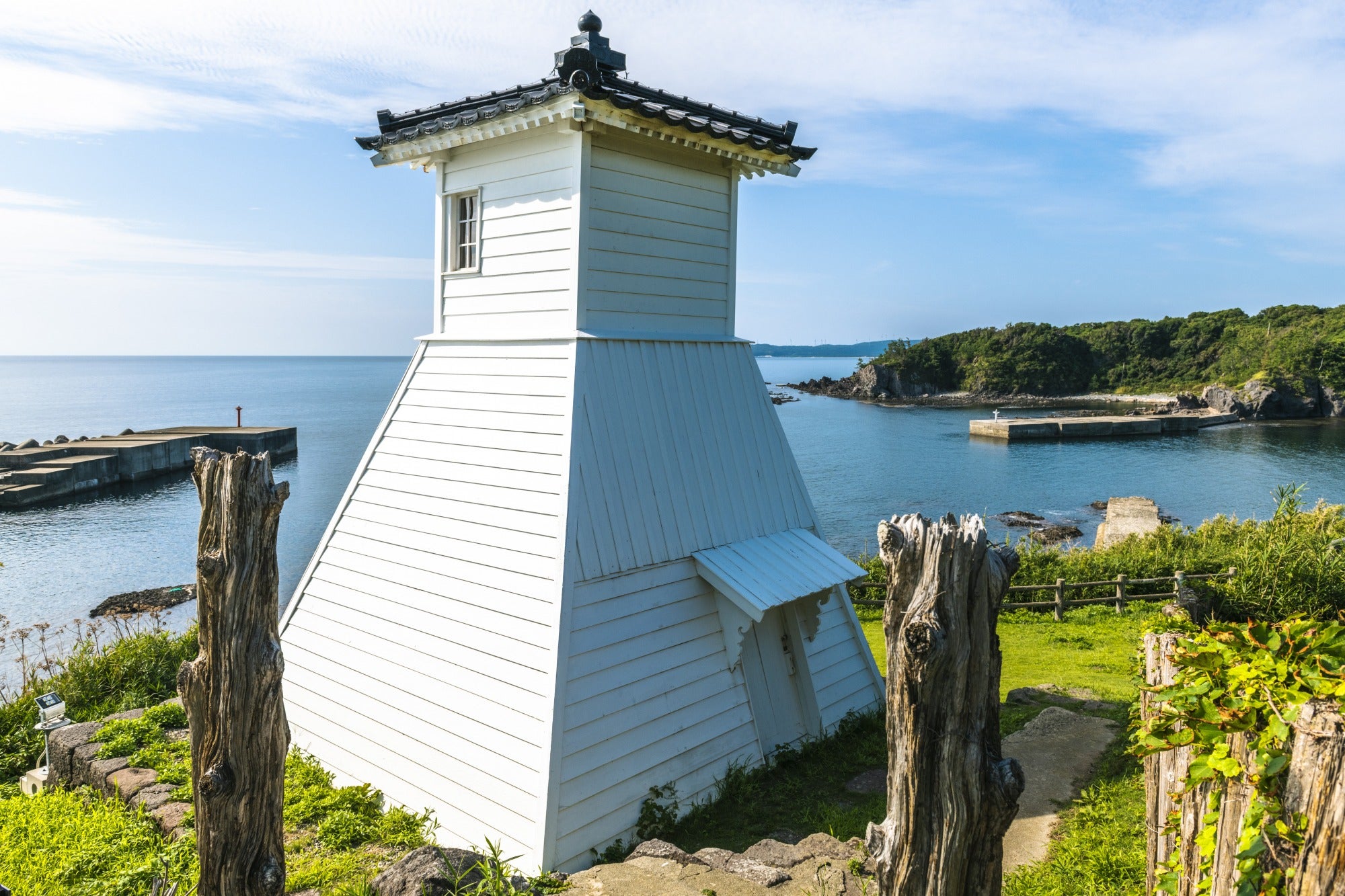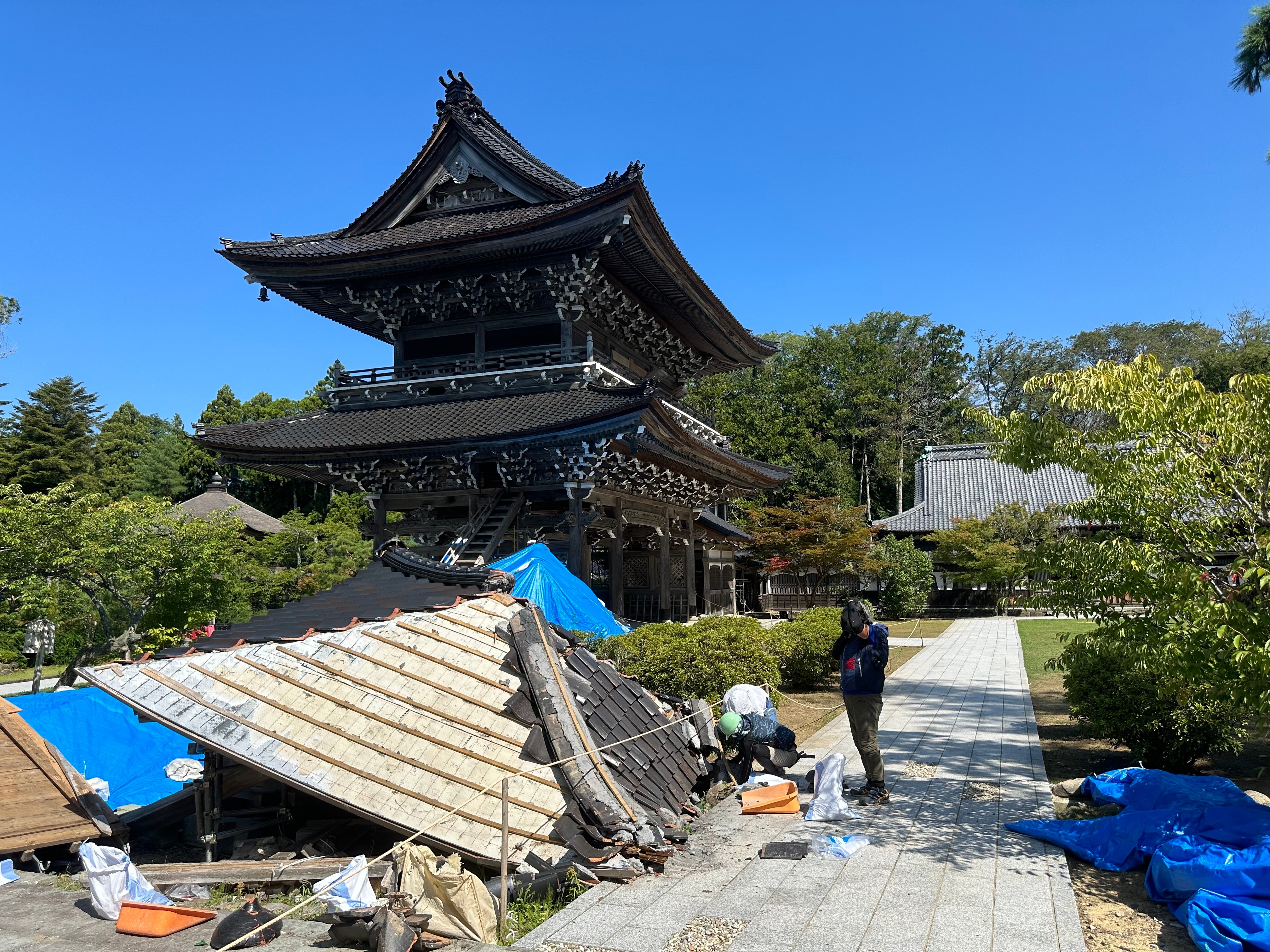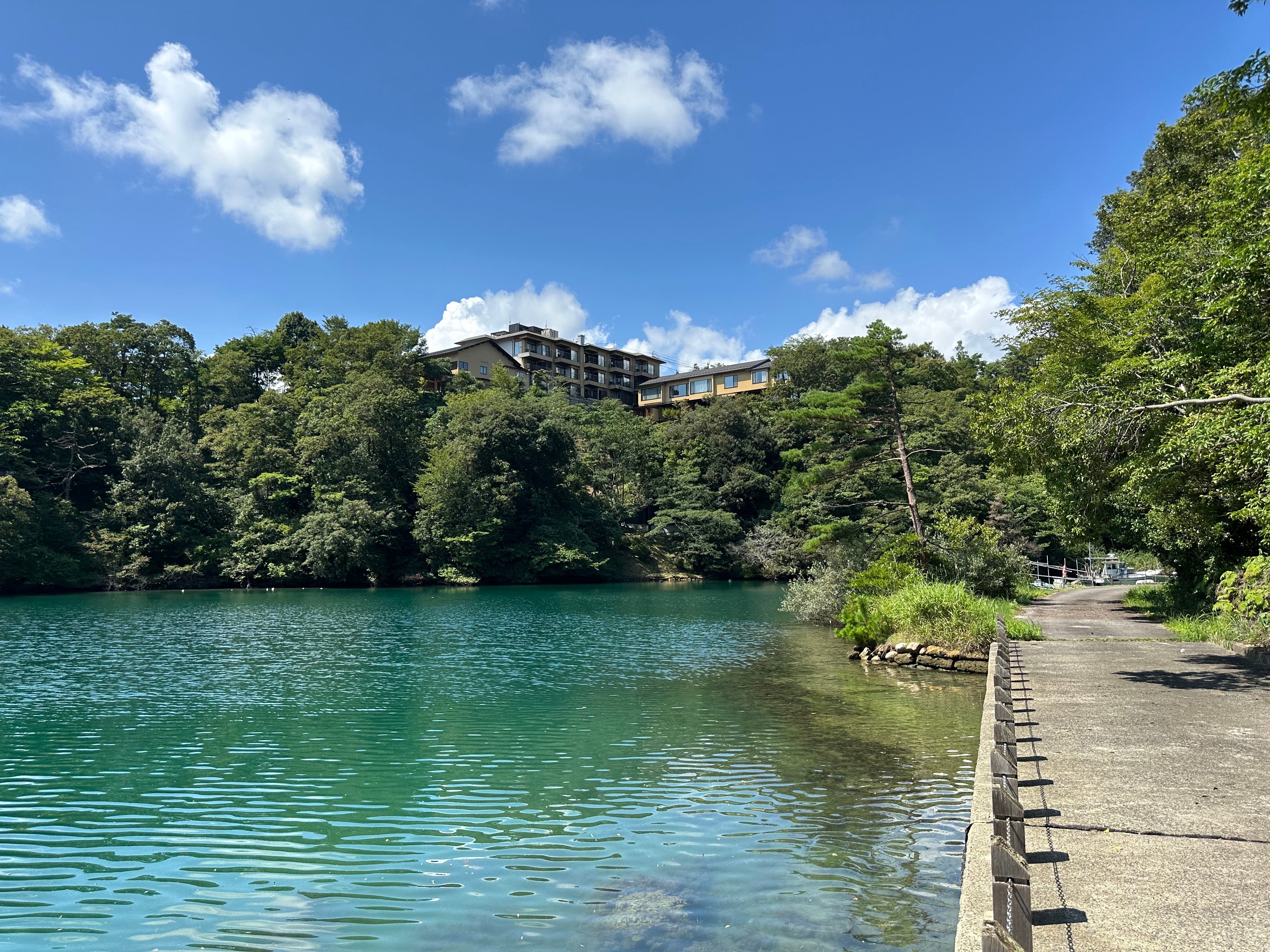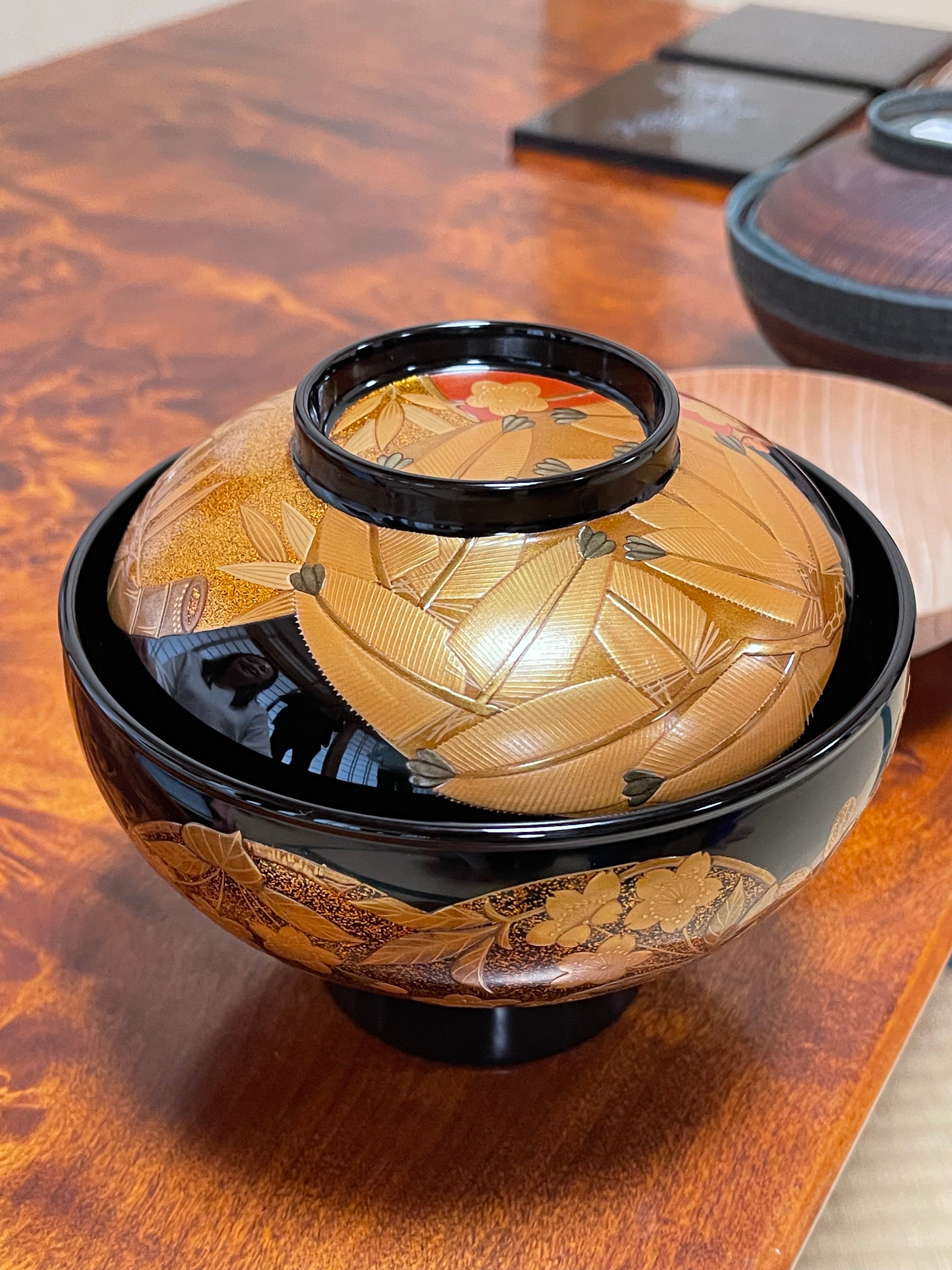“I see the people of Noto standing up and taking a step forward, and I think it is my calling to be here now, in Noto, introducing people to my home town.”
Kaho Shoji and I are making our way along a trail of stepping stones that hug the cliffs of Tsukumo Bay in the Japanese town of Noto, on the peninsula of the same name. In the clear water, sea slugs inch along rocky pools and anemones sway in the current.
“I have travelled to more than 30 countries and all around Japan,” Kaho continues. “But the older I get, the more I appreciate my home: it’s the most beautiful place in the world.”
It’s hard to disagree with her.
Extending 100km northwards into the Sea of Japan in central Honshu, the Noto Peninsula is a landscape of seaside rice paddies, small-scale agriculture and fishing. Wooden homes with glossy black roof tiles dot the countryside. The coastline is home to some of Japan’s last shellfish divers, and there are Buddhist pagodas and temples to see, including the revered Shinto shrine Keta Taisha, whose ancient sacred forest can only be entered by priests and Emperors.

Daily life in Noto is deeply connected to the land. Noto’s squid-jigging fleet is just around the headland from where we are walking, while a nearby village cultivates Japan’s famously sweet strawberries. On the clifftop, our home for the night comes into view. Hyakurakusou is a ryokan inn that’s home to a curious cave bath chiselled into the rock face.
It’s a scene of tranquillity that belies Noto’s recent history: In 2024, the peninsula was devastated by a 7.6-magnitude earthquake and tsunami on New Year’s Day. Local guide Kaho was with her elderly mother at the time, and they were thrown to the ground by the force of the quake. Just over 16 months later, the death toll stands at 581 and the impact is still very much in evidence.

We pick our way over a concrete quay that was buckled and distorted by the tremors. A large Kiku cherry tree catches my eye. It’s a late-blooming variety with billowing double petals like candy floss. If this were anywhere else in Japan, there would be crowds, but in Noto it’s just our party of 12 – from the UK, US, Hong Kong and Australia – travelling with Kaho on Walk Japan’s inaugural Noto journey. Devised by Kaho Walk Japan’s CEO Paul Christie, the tour delves deep into the area’s food and onsen culture, and also its recovery efforts, with opportunities to meet locals at every turn.
We regroup on a woodland path carpeted with butterbur. “We ate this yesterday,” Kaho reminds us, picking a heart-shaped leaf. It was just one highlight of a delicious lunch we enjoyed at Saryo Somamichi restaurant in Wajima City.
We travelled there along Noto’s west coast after our first day together in Kanazawa – exploring a gold leaf workshop and lunching on bento from two-Michelin-star chef Seiichi Nakagawa – and a night in a hot-spring hotel. After a morning spent walking the craggy path to Fukura’swooden Meiji-era lighthouse, we drove to Saryo Somamichi, pulling over where the coastline had been lifted four metres higher, and the ocean floor exposed by the raw power of the earthquake.

Saryo Somamichi was a tranquil contrast. One of Noto’s finest restaurants, it is located in an old minka farmhouse renovated by architect Yoshifumi Nakamura, the restaurant’s former premises having been destroyed. Chef Yutaka Kitazaki has elevated the locally foraged and fished produce to an art form, and we enjoyed dishes such as koshiabura (a wild mountain shoot) tempura and steamed rock fish served on lacquerware by Akito Akagi, a master of Wajima-nuri, a craft synonymous with Wajima.
That evening, at Kappo Kuwagumi restaurant, we witnessed the artistry involved in Wajima-nuri at a private demonstration by Hiroyuki Ebata, a 4th-generation artisan of maki-e – a decorative technique using metallic powder. Over the 10-course parade of seasonal cuisine that followed – including firefly squid, Noto beef, cherry blossom mochi and plenty of local sake – Ebata revealed that he is currently creating his masterpieces from a temporary workshop, his home-studio having been rendered unliveable by the quake.
On foot in Wajima the next morning, we saw for ourselves the destruction, with street after street of collapsed buildings and rubble in what was once the busy central market. Next to our hotel – the only one back up and running – were scores of temporary homes; the kind Ebata was now living in. It was deeply affecting.

Traces of the quake were everywhere we went, but so too were indelible moments of joy. Like meeting the elderly owner of Torii Shoyu in Nanao, who invited us into her soy sauce microbrewery to taste the first batch she had made since the earthquake. Or stopping amongst rice paddies to taste award-winning Italian gelato made with Noto’s creamy cow milk. Or listening to Takamitsu Haya, the resident of Noto town, share his experience of the quake and educating us about the area’s local squid, while dressed as one.
“Once you are home”, Haya implored, “take five minutes to think of Noto – to remember how it felt to be here, and to help us move towards a bright future”.
Kate was a guest of Walk Japan. The company’s next four-night ‘Onsen Gastronomy: Noto’ tours take place in October and November 2025, with four more planned for 2026. From £2,355pp, full-board. Land only.


